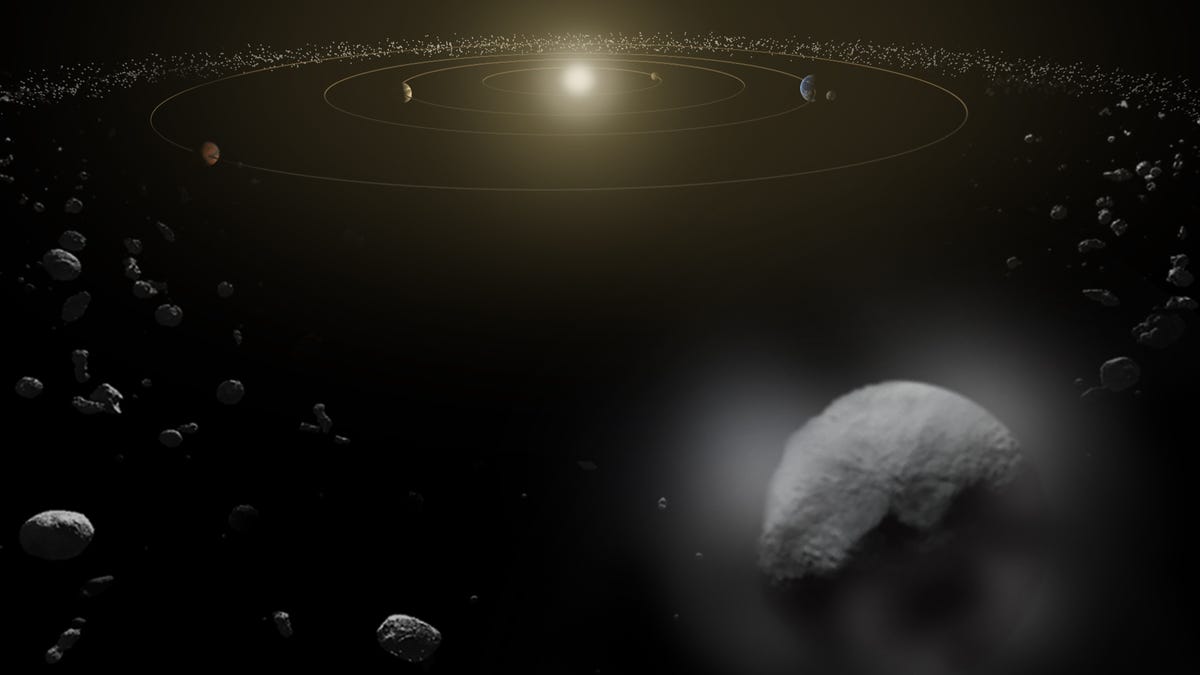'Alien' asteroid spotted dive-bombing our solar system
Astronomers may have discovered the first interstellar object, a comet or asteroid that's broken free of another star to pay a visit to our sun.

Did we get a visit from an interstellar object? Scientists believe it's very likely.
All the asteroids and comets astronomers have ever spotted in our celestial neighborhood appear to come from somewhere else in the solar system and orbit the sun, just like Earth.
That is, until the University of Hawaii's Pan-STARRS 1 telescope last week discovered what appears to be the first ever seen "interstellar object" -- an asteroid (or maybe a comet) that escaped from the gravitational grasp of another star and fell through the roof of our solar system.
That makes the object currently designated A/2017 U1 an alien of sorts around our corner of the cosmos.
The foreign space-something is less than a quarter-mile (400 meters) across, but is moving super fast at 15.8 miles (25.5 kilometers) per second. That's over three times faster than Asteroid 2012 TC4, the rock that gave Earth a close shave earlier this month.
"This is the most extreme orbit I have ever seen," said Davide Farnocchia, at NASA's Center for Near-Earth Object Studies (CNEOS). "It is going extremely fast and on such a trajectory that we can say with confidence that this object is on its way out of the solar system and not coming back."
A/2017 U1 dropped into our neighborhood from "above" the relatively flat ecliptic plane in space where the planets and other asteroids orbit the sun. So, if you imagine our solar system as being more or less flat, it's as if the object dropped in out of the sky. But rather than impacting anything in our solar system, the object passed closer to the sun than the orbit of Mercury on Sept. 2 before making a hairpin turn under our solar system and getting flung back out of town.
This animation shows the path of A/2017 U1, which is an asteroid -- or perhaps a comet -- as it passed through our inner solar system in September and October.
The well-traveled asteroid passed under Earth's orbit on Oct. 14 but never came closer than 15 million miles (24 million kilometers) to us and is now speeding away in the direction of the constellation Pegasus.
"We have been waiting for this day for decades," said CNEOS manager Paul Chodas. "It's long been theorized that such objects exist -- asteroids or comets moving around between the stars and occasionally passing through our solar system -- but this is the first such detection."
Astronomers around the world are currently pointing telescopes at the object to collect as much data as possible while it's still visible and hopefully learn more about where it came from and what it's made of.
I can already hear the gears turning in the heads of the many alien enthusiasts out there, and as Sky and Telescope notes, the object appears to have come from the vicinity of the star Vega, home to the aliens in the Carl Sagan novel "Contact" that was adapted into a popular movie starring Jodie Foster in 1997.
Of course, at the rate the object is moving, it would have taken 300,000 years to travel the 25 light-years from Vega. That long ago, Vega would have been in a totally different location, meaning it probably was not deliberately launched in our direction by ancient aliens. But who knows what else is flying around out there between the stars.
Crowd Control: A crowdsourced science fiction novel written by CNET readers.
Solving for XX: The tech industry seeks to overcome outdated ideas about "women in tech."

